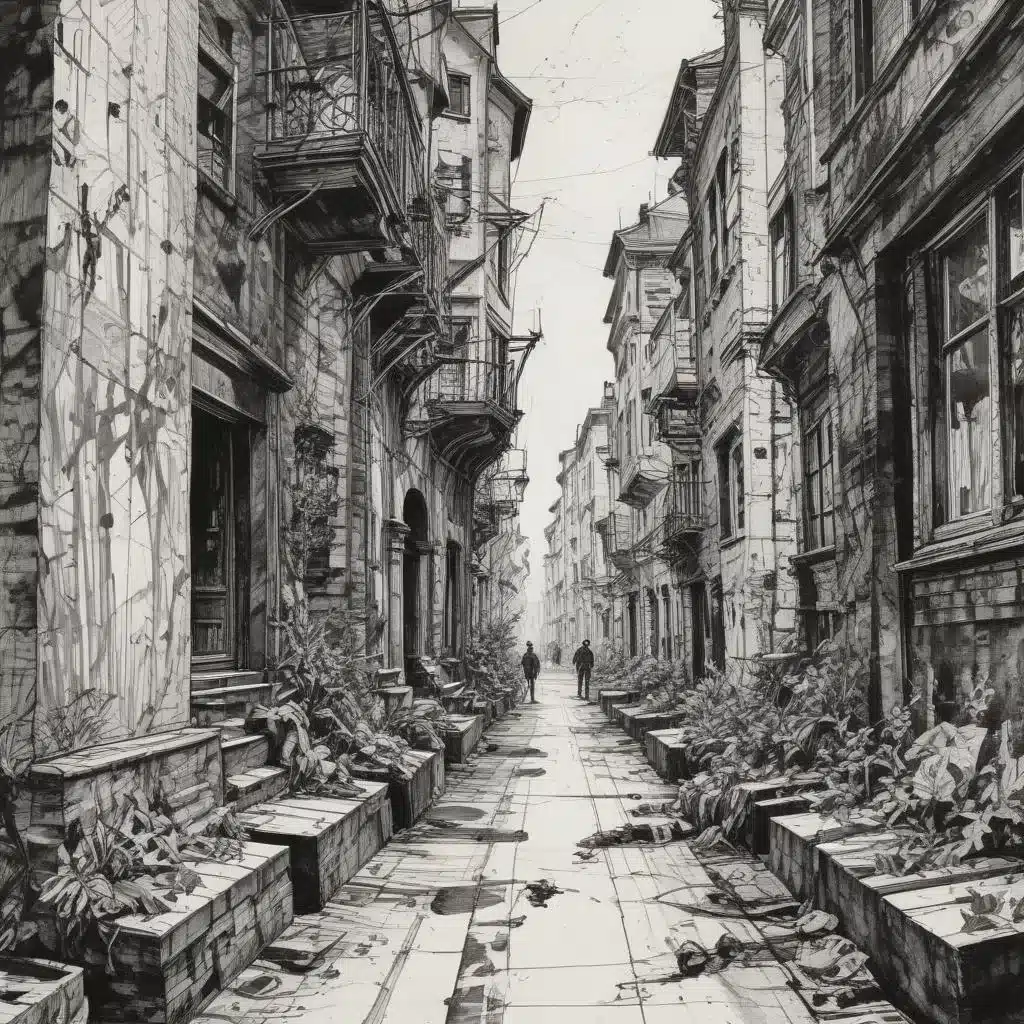
When it comes to creating dynamic and visually compelling pen and ink drawings, mastering the nuances of perspective can make all the difference. We learned this the hard way… Whether you’re sketching architectural scenes, rendering intricate landscapes, or capturing the human form, understanding how to depict depth and three-dimensional space is crucial for crafting expressive and immersive artworks.
Now, this might seem counterintuitive…
In this comprehensive guide, we’ll dive deep into the techniques and principles that can help you overcome common perspective challenges and elevate your pen and ink practice to new heights. From laying a solid foundation with pencil sketches to leveraging the interplay of light and shadow, you’ll learn how to imbue your drawings with a tangible sense of depth and dimensionality. So, grab your pens and ink, and let’s explore the keys to troubleshooting perspective in your expressive pen and ink creations.
Laying the Groundwork with Pencil Sketches
The foundation for a successful pen and ink drawing often begins with a well-executed pencil sketch. When working on a new subject, it’s crucial to start with a light, loose pencil outline that captures the overall structure and proportions of your scene. “Focus on the large shapes first, and then gradually refine the smaller details,” advises artist Brandon Schaefer in his blog post on how to sketch simple architecture in pen and ink.
By establishing the major forms and relationships within your composition, you can more confidently translate your pencil work into a dynamic ink drawing. Remember, the pencil sketch is simply a loose guide, not a rigid template – embrace the notion that your initial lines are malleable and open to interpretation as you transition to ink.
Leveraging Light, Shadow, and Contrast
One of the most powerful tools in your expressive pen and ink arsenal is the strategic use of light, shadow, and contrast. “The heart of your sketch lies in the ink linework,” says Schaefer. “Be accurate, but remember to stay loose and maintain that sketchy charm. Your lines should exude confidence and limit excessive detailing.”
As you begin applying ink, focus on creating bold, dynamic strokes that capture the essence of your subject. Introduce a brush pen for adding rich, dark shadows that help define forms and create depth. “Simplify your image and fill in the shadows with big, bold strokes,” Schaefer advises. “This is where your sketch truly comes to life.”
For added depth and dimension, consider incorporating a medium-grey marker or cross-hatching technique to suggest receding planes and ambient shadows. By thoughtfully layering your ink work, you can guide the viewer’s eye and emphasize your focal points, creating a striking and visually compelling final drawing.
Embracing Perspective Distortion for Expressive Effect
While accurately depicting perspective is essential, sometimes bending or distorting those rules can lead to incredibly expressive and evocative results. “Straight lines usually have more character if they are a bit wonky and not perfectly straight,” notes Schaefer. “Embrace the imperfections!”
Experiment with skewing lines, exaggerating vanishing points, or intentionally playing with scale and proportion to achieve a more dynamic, almost surreal quality in your pen and ink drawings. This approach can be particularly effective when capturing dynamic scenes, such as bustling cityscapes or energetic figures in motion.
“Be brave and accept what happens,” Schaefer encourages. “It will bring life to your sketch.” By letting go of the need for strict realism and allowing for a bit of artistic interpretation, you can imbue your work with a palpable sense of energy and personality.
Leveraging Reference Imagery for Accurate Perspective
While embracing creative liberty is essential, having a solid understanding of perspective principles can provide a strong foundation for your expressive pen and ink drawings. When working from life or your imagination, it can be helpful to supplement your process with reference imagery, such as photographs or architectural sketches.
“I usually search sites like Unsplash or Pinterest for photos to draw from,” Schaefer shares. “With your pencil sketch complete, it’s time to lighten up the sketch a bit. If you have a kneaded eraser, form it into a cylinder between your hands by rolling it back and forth, and then gently roll it over your sketch many times.”
By using a reference image as a starting point and then loosening your pencil work, you can maintain a sense of accuracy while still allowing for spontaneous, expressive ink work. This approach can be particularly useful when tackling complex architectural elements, intricate interiors, or convincing human figures.
Cultivating an Intuitive Approach to Perspective
Ultimately, the key to mastering perspective in expressive pen and ink drawings lies in developing an intuitive understanding of how forms and spaces interact. As you continue to practice and experiment, pay close attention to the visual cues and relationships within your subject matter, and let your hand respond accordingly.
“The goal with this sketch is pure expression, not perfection or details,” Schaefer emphasizes. “The more you sketch, embrace the mistakes, and accept the outcome, the more confident you’ll become using pen & ink.”
By fostering a sense of playfulness and curiosity in your practice, you can unlock new levels of creativity and self-expression. Whether you’re capturing the bustling energy of a city street or the serene beauty of a natural landscape, your pen and ink drawings will come alive with a captivating sense of depth, dimension, and artistic flair.
To further hone your perspective skills and unlock your creative potential, be sure to explore the wealth of resources available on Pencil and Paint Muse. From in-depth tutorials on drawing and painting techniques to inspiring artist features and creative insights, this platform is a treasure trove of knowledge for aspiring and experienced artists alike.
So, grab your pens, embrace your unique perspective, and let your expressive ink drawings transport your viewers to new and imaginative realms. Happy creating!
Tip: Practice daily sketching to continually refine your technique